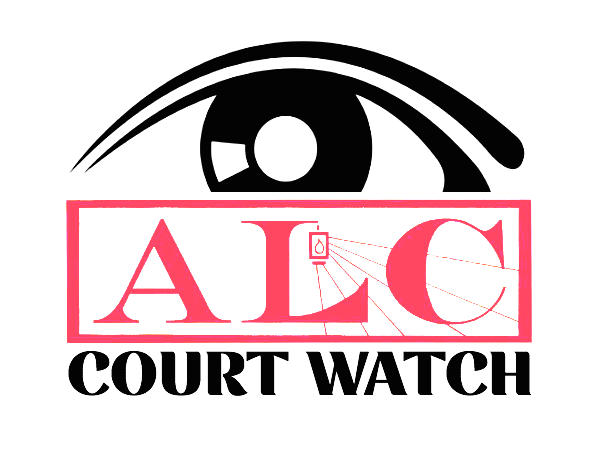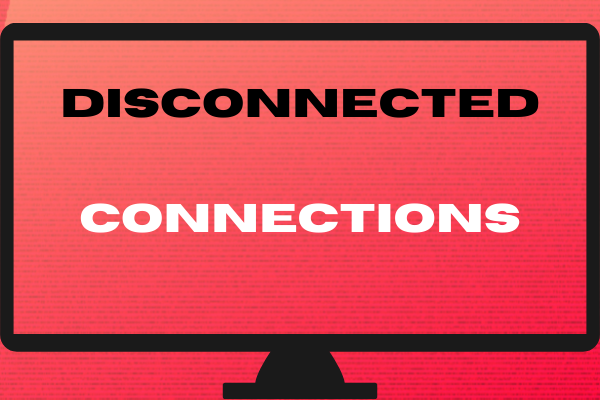Dheeksha Senthur
Court Watch volunteer Dheeksha Senthur shares her experiences observing court remotely during the winter of 2020 through the summer of 2021.
“Can you hear me?”
The screen flickered momentarily and a blurry image of a person dressed in an orange jumpsuit came into focus. The clang of the door shutting behind him, the orange jumpsuit against the sapphire-blue paper wall crystallized, the graininess emerging into the silhouette of a person. I watched as the man on the screen placed the headset over his ears, gazing at the monitor with widened eyes.
“Can you hear me?”
His voice echoed through the 14 devices of the 14 participants on the call before dissipating.
This was my first time attending court as a volunteer court watcher and I hadn’t quite known what to expect. I had envisioned a polished, wood-paneled courtroom presided over by a stern-faced judge; then the defense and prosecution would heatedly debate the case. I expected a game of legal jargon, one which I had to capture and transform into writing. The day before, I had prepared for this game of Motions Court, looking through the docket sheets for each one of my cases. It was in one of the docket sheets, next to his name, that I saw a date of birth in inked black letters: his year of birth was close to mine. A heavy charge was printed beneath his name.
At this moment, looking up from my desk, it was surreal to see the man from the docket sheet before me. The screen then flipped over to Judge Lazzara who appeared to be in her own home. She greeted everyone with a sunny “Good morning” and a gentle smile, apologizing for the delay caused by a prior status hearing. The screen flickered to the clerk in a mahogany courtroom with his right hand raised as the man in the motions court case was sworn in. The words rang out like the strike of a gavel as my laptop’s screen melted away into the courtroom proceedings.
Judge Lazzara began promptly with a series of questions: whether the individual consented to the lack of face-to-face interaction, to having his due process carried out remotely, etc. The man replied with “Yes ma’ams” during the questioning, but now, he asked a question himself. The screen lit up with a blue B icon as his video materialized; he asked whether future proceedings would take place over video call. Judge Lazzara smiled and said it was a good question and reassured him that continuing with the video call was “just for today.”
The defense attorney brought up the first of seven motions, a motion to sever, stating that the jury could be prejudiced during the two separate trials required by two different charges brought against the defendant. The attorneys went back and forth before Judge Lazzara denied the motion to sever but assured that there would be precautions in place and reminders to the jury so prejudice wouldn’t hold. As the proceedings continued, the room was filled only with the voices of the judge, defense, and commonwealth attorneys. The man in the orange jumpsuit seemed like a silent spectator.
Behind a light-blue surgical mask, he gazed at the screen; sometimes his eyes would wander off to the side and sometimes they would glaze over. The voices of the courtroom buzzed, but he never spoke. Loud beeping sounds from the jail began punctuating the din of legal arguments; eventually, the beeping became so disruptive that he had to be muted. That was the last time I saw him.
The hearing soon came to an end and the defense attorney brought up the question of a trial date. Judge Lazzara said she would look further into it but could not guarantee an exact one. The judge then said goodbye to everyone, including the muted defendant, whose headset, she jokingly noted, was already on the table.
I logged out of the call, examining all the nondescript terms in my notebook on the man I saw only in flashes, the “motions in limine” and “discovery motions.” I had witnessed my first ever hearing where a human being’s fate would be determined—and I would witness more.
The days passed by in a blur and I adjusted to the routines of remote court watching to the point where I could identify who was presiding simply by distinguishing the camera angle, the soft humming of background noise, and the mannerisms of the masked judge behind the sheets of plexiglass. I grew attuned to the ambiance of the courts as I sat at the desk beside my snow-banked window. The snow soon melted to a warm spring, and court officials became more adept at managing technical difficulties. As hearings passed by, I began pinpointing notable moments and conversations rather than focusing on keeping up with the formalities of the proceedings.
During a probation violation hearing, a defendant called into the meeting through his phone. His public defender described for the judge a number of unimaginably difficult circumstances the defendant was going through in his life. Despite these challenges, the defendant’s voice was bright with optimism and laughter as he spoke, never alluding to any of these struggles himself. He was determined, despite them, to try his best to pay his restitution.
Other cases were more obviously suffused with suffering and not just that of the people incarcerated at ACJ. Witnesses were brought forth, friends and family members, who would convey their pain to the judge. When I heard their voices crack as they appealed for justice within this system, I realized I was privy to a delicate, far-reaching vulnerability. They reminded me that what happened in these courtrooms, themselves an extension of the prisons where so many were held, had an impact beyond the person whose name was listed on the docket sheet. Hundreds of people away from my screen were experiencing the system’s influence on their lives, including the moments when I was absorbed in writing about just one.
Recently I noticed there was now a trial date set for the man whose hearing I observed during my very first court watching shift. Like all the hearings I observed, we’d only been connected once by the blue of our screens, but now he’d be alone in his orange-branded jumpsuit at the jail, awaiting a trial with countless others who had also sat in front of the blue wall of the jail, the thin table of the Pittsburgh Municipal Court, awaiting their fates. Now, there would only be waiting until his trial approached, waiting until this series of oblique connections through computer screens and courtrooms might begin to look like change.

